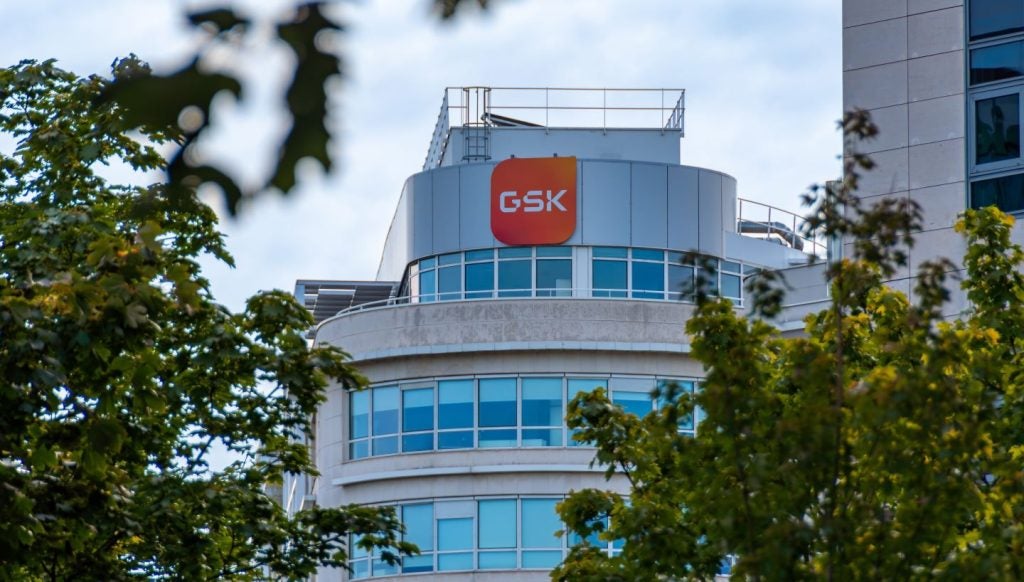
Systems established for traditional pharmacokinetic (PK) and pharmacodynamic (PD) analyses were not designed to support complex clinical trials of new drugs in development. The incorporation of biomarkers into early drug trials has challenged leading companies to reprioritize innovation and drive quality sample management systems.
If we took a retrospective look on the evolution of drug development, it is obvious that the market has seen an influx of immuno-oncology and immunotherapy companies. This is in part because immunology as a science is relatively new as compared to the other classical sciences. Immunology ties in with the fields of epidemiology and medicine, however, it was not until the 19th and 20th centuries before the concept developed into scientific theory. With the advancement of diagnostic and research tools, researchers could then study the immune system in greater detail leading to discoveries in key genes and pathways of immunity.
“A grand instrument of clinical discovery” – Lloyd Old
These discoveries eventually lead to the commercial availability of Human Insulin, the first recombinant DNA product to receive FDA approval in 1982, followed a few years later with approval of Herceptin, a targeted therapy for treatment of a specific cancer cell type. The adoption of the 1992 Accelerated Approval Mechanisms and Prescription Drug Fee Act significantly decreased approval times for new drugs leading to an increase in patient access to new medicine. In fact, between Jan 1, 1990 and Nov 1, 2002, the FDA granted marketing approval to 71 oncology drug applications.1 This lead to the establishment of The Cancer Vaccine Collaborative and the revival of cancer immune surveillance, with early-phase clinical trials aimed at establishing the principles of effective vaccination with cancer antigens.2
Early endpoints used in the approval of these oncology drug marketing applications included response rate, time to progression and disease-free survival.1 Today these efficacy endpoints are more commonly referred to as overall response rate, time to next treatment and progression-free survival, and are considered surrogates for a better life and possibly improved survival in selected clinical settings1. Marketing approval of oncology drugs requires substantial evidence of efficacy and new endpoints could provide quantitative assessment and additional basis for approval.
Discoveries on antigen-specific CD4 and CD8 T cells by Vencezo Cerundolo and colleagues in 2003 helped jump-start clinical testing of antigen specific T and B cell responses3, and between 2005-2006, the type, density and location of immune cells within tumor samples were found to be better predictors of patient survival than previous pathological criteria for tumor staging.4,5 This lead to an onslaught of T cell discoveries including TCR signaling microclusters, cancer-specific cytotoxic CD8 T cells and Th17 helper T cells. These discoveries began to bridge the gap between research and clinical, building new partnerships in bringing cutting edge science to patients.
Current Immuno-Oncology Landscape
The identification and prioritization of biomarkers that might inform clinical evaluations of novel therapeutics6 influenced both large pharmaceutical and smaller biotechnology companies to establish programs designated to the development of biomarker therapies. Targeted therapies using oncolytic viruses, checkpoint inhibitors or peptide and dendritic cell vaccines have received FDA approvals. IDO inhibitor therapies, DNA and RNA vaccines along with bacterial and viral vector vaccines may be next andclinical trials involving CAR-T therapies and TCR therapies are ongoing.
How well do you really know your competitors?
Access the most comprehensive Company Profiles on the market, powered by GlobalData. Save hours of research. Gain competitive edge.

Thank you!
Your download email will arrive shortly
Not ready to buy yet? Download a free sample
We are confident about the unique quality of our Company Profiles. However, we want you to make the most beneficial decision for your business, so we offer a free sample that you can download by submitting the below form
By GlobalDataCollectively, industry is rapidly identifying, developing and qualifying potential high-impact biomarkers particularly to enable improvements in drug development and clinical care.
What Does That Mean for a Company?
Together research and clinical operations teams can design sample management processes for novel biomarker discoveries. Custom processes to support innovative science and improve sample quality for downstream analysis. The goal is to maximize site activities to consistently collect quality samples. This involves process optimization and key steps include:
1) Review existing procedures for potential improvement
2) Meet with site personnel to discuss concerns/challenges
3) Incorporate a streamlined process for reproducible results
4) New manual with requisitionforms that provide real-time quality data
5) Site follow-up visits to evaluate progress
See Also:
Site personnel feedback is valuable in creating processes to support complex biomarker studies. In addition, visibility of sample quality in real-time allows problems to be identified at a resolvable stage. As clinical development pipelines expand, companies should explore new innovations and partnerships that will allow for scalability, enabling efficient and improved sample management. Outsourcing to qualified vendors can shift the focus back on core objectives and scientific innovation.
Operational, Logistics and Sample Management Support
Biopharmaceutical, medical device and contract research organizations have created a demand for highly customized global central laboratory and early development services focused on operational, logistics and sample management support including:
- Laboratory services operations management
- Custom collection and transport supplies
- Logistics oversight
- Site training materials and site support
- Specimen processing and analysis
- Specimen tracking
Sites are shipping to multiple labs and locations with no visibility accompanied with challenges to integrating multiple data sources. Real-time tracking services like LabConnect’s SampleGISTICSTM platform follow specimens from collection through logistics to receipt at any laboratory or storage location in the world. The digital pen technology and data integration tools allow instant access to sample information and comprehensive real-time sample tracking from the moment of collection.
The technology involves regular paper documents with micro-dot pattern that enables handwriting to be captured. The micro-dots act as a positioning matrix where the pen can identify the exact piece of paper and the exact location of ink being written. This allows for rapid identification and resolution of queries. The digital pen requisition forms are virtually accessioned into a single searchable database. The result is increased site compliance and improved sample integrity through chain of custody tracking.
Increased Efficiency in Managing Biomarker Samples
With innovation at the foreground, implementation of SampleGISTICSTM can lead to increased efficiency and improved sample management.7 LabConnect provides a solution to transition from manual sample tracking to automated, develop customized laboratory manuals and training materials, while providing sites with sample-specific collection kits and study supplies. LabConnect is a leading provider in sample management support, with dedicated teams of experienced project managers and project coordinators.
The teams accomplish more by being flexible and nimble enough to implement changes quickly. LabConnect’s SampleGISTICSTM instant accessioning can reduce reconciliation time. Overall improvements inefficiency can occur with strategic shipping schedules correlating with interim analyses, the use of combination shippers, and a better ability to schedule batch shipments. The automated solid chain of custody and SampleGISTICSTM dashboard tool becomes a collaboration tool and increases clinical operations productivity. This ensures the highest quality data and site support, with more focus on site training, query resolution and immediate contact regarding discrepancies. Implementing a proactive and dynamic approach allows for scalability without compromising quality.
Decrease Time and Cost for Drug Development
Successful companies reduce timelines, lower the cost to market and bring treatment to patients. Quality sample management systems with real-time sample tracking can provide early evaluations to better inform Phase II endpoint selection. Companies gain the ability to make protocol design decisions more quickly, streamlining trials to demonstrate proof of concept and facilitate more efficient approval pathways.
A lower cost to market could potentially be achieved by controlling shipping logistics and decreasing time from collection to analysis so robust data can be delivered to the market. Companies do not want to be in a situation where poor clinical data hits at the worst possible time. In fact, in years’ past FierceBiotech published the Biotech Graveyard of company failures possibly the result of poor sample management leading to product failure and/or inability to finance. Ultimately though, it is about the patients.
Industry is on the path of discovery for patients and proper biomarker sample management can lead to approvals. In 2016, the FDA approved ofatumumab for leukemia, obinutuzumab for lymphoma, nivolumab for lymphoma and head, neck and bladder cancer, atezolizumab for bladder and lung cancer, pebrolizumab for head, neck and lung cancer, and olaratumab for sarcoma. Is your company going to be next?
*This article was written when the author was previously an employee of Immune Design. The views portrayed are solely those of the author and do not represent the company.
References
1) Johnson JR, Williams G and PazdurR.End Points and United States Food and Drug Administration Approval of Oncology Drugs. J Clin Oncol.2003, 21:1404-1411
2) O’Donnell-Tormey et al. The Cancer Vaccine Collaborative: a new model of coordinated discovery. Cancer Immunity. 2012, 12:10-12.
3) Cerundolo V et al. NKT cells enhance CDR and CD8 T cell responses to soluble antigen in vivo through direct interaction with dendritic cells. J Immunol. 2003, 171:5140-5147
4) Pagès F et al. Effector memory T cells, early metastasis, and survival in colorectal cancer. N Engl J Med. 2005, 353(25):2654-66
5) Galon J et al. Type, density, and location of immune cells with human colorectal tumors predict clinical outcome. Science 2006, 313(5795):1960-4
6) Dancey J et al. Guidelines for the development and incorporation of biomarker studies in early clinical trials of novel agents. Clin Cancer Res. 2010, 16(6):1745-1755.
7) LabConnect. SampleGistBio White Paper VF. 2014.







Related Company Profiles
Immune Design Ltd.
FierceBiotech
Johnson J. R.
LabConnect LLC